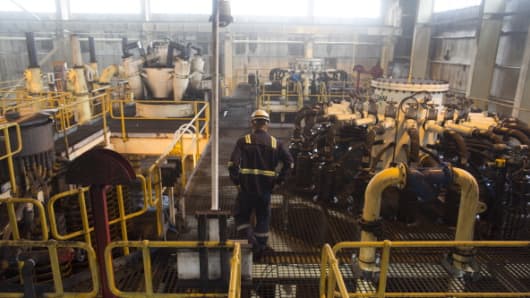Part of the future of Glencore and others in the commodities sector boils down to how willing banks are to keep holding risk. Citigroup, a staunch defender of Glencore in the past week, pointed out in an analyst note that there are a large number of lenders willing to support the commodity house: 60 banks have done business with Glencore for decades and presumably have a good understanding of the company.
For now lenders are willing to extend credit to Glencore and other companies battling a commodities shock. For instance, Tullow Oil, which saw its stock price plunge to a 10-year low last week, confirmed it had passed a routine biannual check-up of its credit facilities.
Tullow said it had debt capacity of $3.7 billion available and the outcome demonstrates that lenders are willing to support it during the period of low oil prices.
Buried in these positive statements from the two UK-listed names is the ongoing risk for the sector if prices resume their downward path. Will the same lenders be as generous with their terms and conditions given the lessons of the financial crisis from holding too much risk, even from high profile clients?
The dilemma for creditors and shareholders explains the obsession with raking over the history books to glean information about when the pain might end. Is it the 1980's oil bust all over again, 1998 when markets battled a currency crisis and defaults or is it a repeat of 2008 when all names were tossed out in market capitulation?
Michael Browne of Martin Currie Investments believes there is no doubt there is will be more hardship. "We know that at least a third of capital expenditure quoted by companies has come from oil and gas over the last five years. This will fall by at least 50 per cent over the 2015 to 2017 period, maybe more. This on its own will knock at least 2.5 per cent off global GDP (gross domestic product) and capex as a percentage of GDP will fall to around the 12 percent of GDP," said Browne.
He points out this is precisely the level that capital expenditure bounced off in 1985: "This means there is more pain coming for those in the sector involved with oil and gas."
But Browne denies we're repeating the 1980s when inflation was running at 15 per cent and capex took six years to recover after its peak. So where is the low point for investors?
Browne pinpoints 2017 and warns the recovery speed will make conditions much more damaging for those with leveraged balance sheets.
Miners have already seen their investment-grade bonds trade more like high yield through 2015 because of debt piles, challenging macroeconomic conditions and oversupply of commodities.
Investors are right to continue to question valuations on the sector and, as Bon Jovi belts out: "We've gotta hold on ready or not".
Karen Tso is an anchor on Squawk Box Europe, CNBC and you can follow her on Twitter @cnbckaren.
Follow us on Twitter: @CNBCWorld





